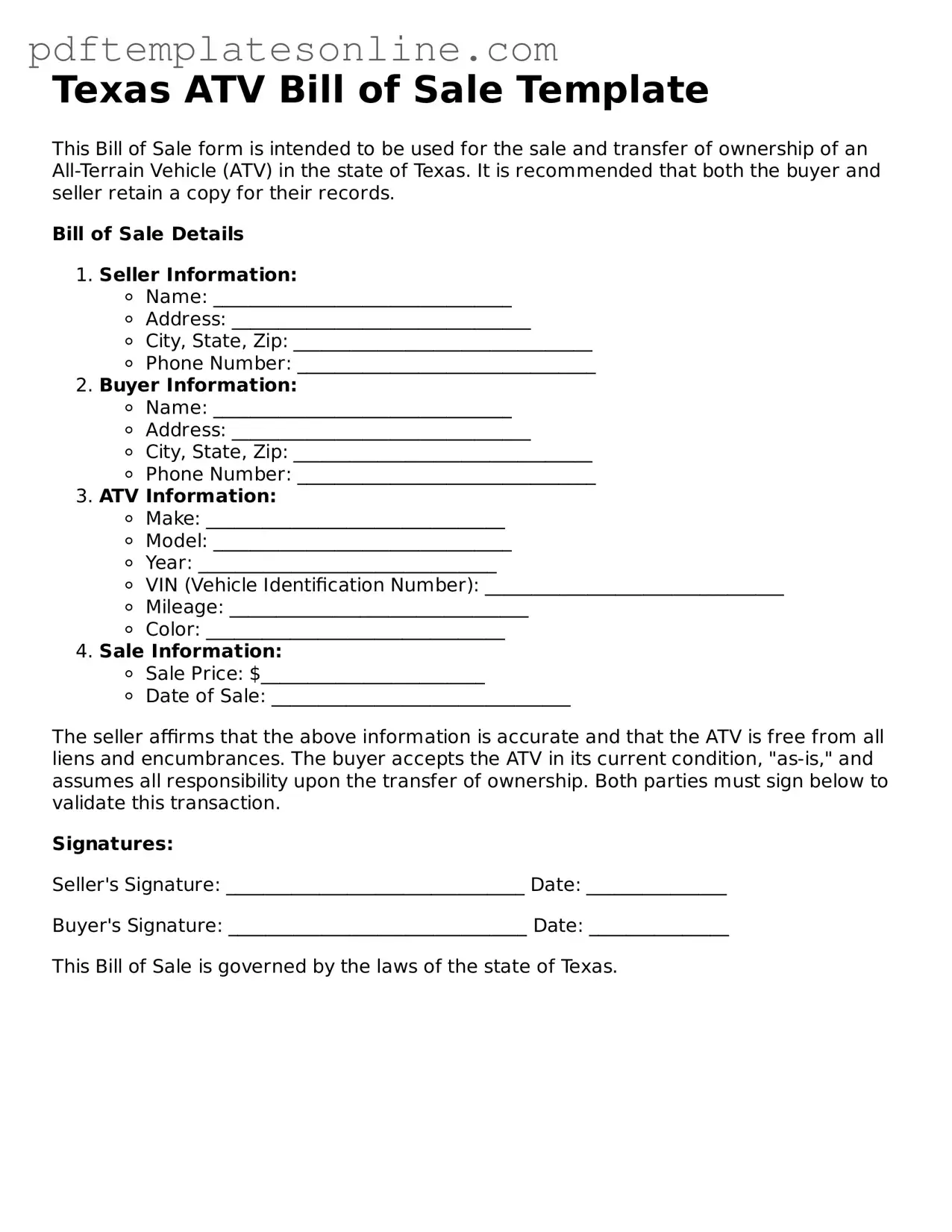Detailed Guide for Writing Texas ATV Bill of Sale
Once you have the Texas ATV Bill of Sale form in front of you, you’ll need to fill it out accurately to ensure a smooth transaction. This document is essential for transferring ownership of an ATV. Follow these steps carefully to complete the form.
- Begin by entering the date of the sale at the top of the form.
- Provide the full name and address of the seller. Make sure to include the city, state, and ZIP code.
- Next, fill in the buyer's full name and address, also including the city, state, and ZIP code.
- In the designated section, write down the make, model, and year of the ATV being sold.
- Record the Vehicle Identification Number (VIN) of the ATV. This number is unique to each vehicle.
- Indicate the sale price of the ATV clearly in the appropriate space.
- If applicable, note any additional terms or conditions of the sale in the provided area.
- Both the seller and buyer must sign and date the form at the bottom. Ensure that signatures are clear and legible.
After completing the form, keep a copy for your records. The buyer should also retain a copy for their records. This document will serve as proof of ownership transfer and may be required for registration purposes.
